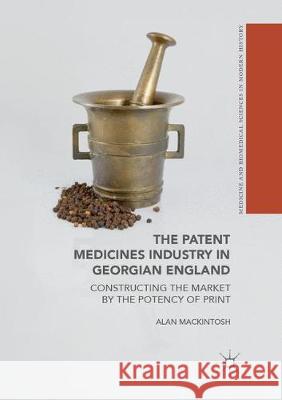The Patent Medicines Industry in Georgian England: Constructing the Market by the Potency of Print » książka
topmenu
The Patent Medicines Industry in Georgian England: Constructing the Market by the Potency of Print
ISBN-13: 9783319888415 / Angielski / Miękka / 2018 / 320 str.
The Patent Medicines Industry in Georgian England: Constructing the Market by the Potency of Print
ISBN-13: 9783319888415 / Angielski / Miękka / 2018 / 320 str.
cena 361,42
(netto: 344,21 VAT: 5%)
Najniższa cena z 30 dni: 346,96
(netto: 344,21 VAT: 5%)
Najniższa cena z 30 dni: 346,96
Termin realizacji zamówienia:
ok. 22 dni roboczych
Dostawa w 2026 r.
ok. 22 dni roboczych
Dostawa w 2026 r.
Darmowa dostawa!
Kategorie:
Kategorie BISAC:
Wydawca:
Palgrave MacMillan
Seria wydawnicza:
Język:
Angielski
ISBN-13:
9783319888415
Rok wydania:
2018
Wydanie:
Softcover Repri
Ilość stron:
320
Oprawa:
Miękka
Wolumenów:
01











